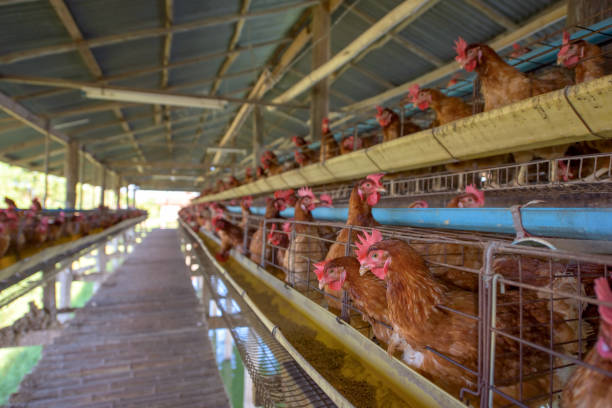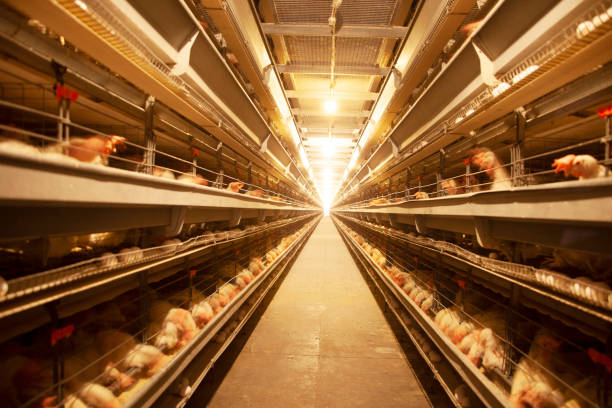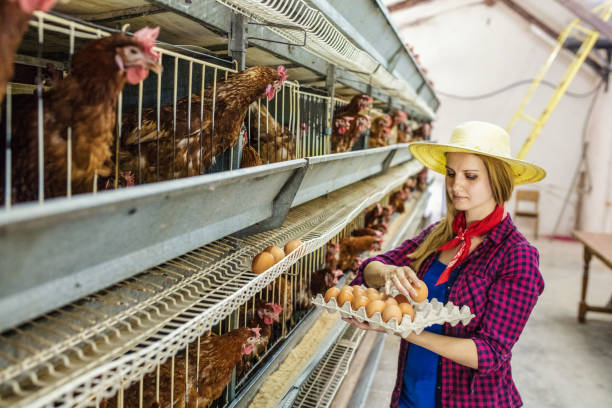Broiler Chicken Cage System for 25,000 Birds – Livi Machinery
Broiler Chicken Cage System for 25,000 Birds – Livi Machinery
Raising 25,000 broilers might sound like a massive undertaking — and it is. But with the right equipment, proper planning, and smart management, it’s not only doable but also highly profitable. At Livi Machinery, we’ve been designing and manufacturing high-performance poultry farming solutions since 2012, and one of our most requested setups is the broiler chicken cage system for 25,000 birds. Whether you’re scaling up an existing farm or starting fresh, this complete guide will walk you through what makes our system stand out, how it improves efficiency, and why thousands of farmers around the world trust us to build their modern poultry operations.
Why Go Caged? The Advantages of Using a Broiler Chicken Cage System
Gone are the days when floor rearing was the only option for broiler production. While traditional systems still exist, caged systems have taken the poultry industry by storm — especially in medium to large-scale farms. So why are more farmers switching to cages? Let’s break it down.
First, hygiene. In deep-litter floor systems, manure accumulates over time, increasing ammonia levels and creating a breeding ground for pathogens. With a properly designed cage system, waste falls through the mesh floor, keeping birds dry and clean. This dramatically reduces footpad burns, breast blisters, and respiratory issues — common problems in floor-reared flocks.
Second, space utilization. Our 25,000-bird broiler cage system is typically arranged in multi-tier (usually 2-3 layers), which means you can house more birds in the same footprint. For example, instead of needing 6,000+ square meters, you could manage the same flock in under 4,000 square meters — a huge saving on land and building costs.
Third, labor efficiency. Automatic feeding, drinking, and manure removal systems come standard or as optional upgrades in our setups. One worker can easily manage feeding and monitoring for all 25,000 birds with minimal effort. That’s not possible with floor-based systems where manual cleaning and feeding take hours every day.
And don’t forget about disease control. With better airflow, reduced direct contact between birds, and easier access for disinfection, caged systems naturally minimize the spread of infections like coccidiosis or avian influenza. When biosecurity matters, cages give you the upper hand.
Our design also includes sloped mesh floors, rounded corners, and non-harmful galvanized wire — all crafted to prevent injury and stress during rapid growth phases. After all, healthy, unstressed birds grow faster and convert feed more efficiently.
How We Design a Complete 25,000-Bird Broiler Cage Setup
When we say “complete solution,” we mean it. At Livi Machinery, we don’t just sell cages — we deliver turnkey systems tailored to your farm size, climate, and production goals. For a 25,000-bird operation, here’s how we structure the setup.
The core of the system is the three-tier broiler cage rack. Each tier averages 80 cm in height, allowing enough headroom for active movement while maximizing vertical space. The total floor space needed is approximately 3,800–4,200 square meters depending on bird weight targets and local regulations. Each cage module holds around 10–12 chicks at start, gradually adjusting density as they grow.
Our cages are made from heavy-duty galvanized steel, ensuring rust resistance and long-term durability — even in humid tropical climates or cold winters. The wire spacing is precision-designed: tight enough to prevent leg injuries, yet open enough for droppings to fall through freely. Adjustable trays below collect manure, which can be removed manually or via conveyor belt — ideal for farms aiming to recycle waste into organic fertilizer.
Feeding and watering lines run along each level. We use chain-driven automatic feeders or auger systems that distribute feed evenly across all sections, eliminating competition and reducing waste. Nipple drinkers are installed at multiple points, ensuring constant access to clean water — critical during heat stress periods.
Ventilation plays a key role too. Our recommended barn layout includes tunnel ventilation with cooling pads and exhaust fans positioned at opposite ends. Temperature sensors and automated controllers adjust airflow based on real-time conditions. This keeps the environment stable, preventing heat buildup that could stunt growth or cause mortality.
We also integrate lighting controls. LED fixtures on timers simulate natural day-night cycles, encouraging rest and efficient metabolism. Bonus tip: dimming lights during peak feeding times improves feed conversion ratios.
What really sets us apart is customization. Need a system compatible with solar power? Done. Want remote monitoring via mobile app? Available. Planning to expand in two years? We design scalable modules so future upgrades fit seamlessly. From foundation layout advice to installation support, we guide you every step of the way.

Real-World Performance and Farmer Benefits
You might wonder: does this actually work in practice? Absolutely. We’ve deployed similar setups in Nigeria, Indonesia, Pakistan, and Mexico — countries with diverse climates and infrastructure challenges. Feedback consistently highlights five major benefits:
One, faster growth rates. Farmers report average market weights reached 5–7 days earlier compared to floor systems, thanks to lower stress and improved health.
Two, lower mortality. Most users see death loss drop from 8–10% in floor pens to under 5% in our caged environment. That’s over 1,000 additional live birds going to market.
Three, better FCR (Feed Conversion Ratio). With less energy wasted on movement and thermoregulation, birds convert feed more efficiently. Many achieve FCRs below 1.6 — impressive for large-scale operations.
Four, higher revenue potential. Reduced labor, vet bills, and feed waste add up to significant savings. Some farms recoup their initial investment within 18–24 months.
Five, easier compliance. In regions tightening animal welfare and environmental rules, our systems meet modern standards for space, air quality, and waste handling — giving farmers a competitive edge.

We also offer training programs, spare parts supply, and on-demand technical troubleshooting. Whether you’re new to caged broilers or upgrading old infrastructure, our team helps you avoid costly mistakes and get faster results.
Ready to Build Your 25,000-Bird Broiler Farm?
If you’re serious about running a profitable, sustainable broiler operation, now is the time to upgrade your housing system. The Livi Machinery broiler cage system for 25,000 birds isn’t just iron and wire — it’s a complete productivity engine designed to boost health, lower costs, and increase output.
We’ve helped hundreds of farmers make the switch, and we’d love to help you too. Whether you need a full turnkey project or just want to compare quotes, our experts are ready to assist. Get a free layout plan, pricing estimate, and consultation tailored to your region and budget.
Don’t leave your success to guesswork. Click below or send us a message with your farm details — number of birds, location, available space — and let’s start building your dream poultry farm together.
Frequently Asked Questions
What is the lifespan of your broiler chicken cages?
Our cages are built from thick galvanized steel and can last 15–20 years with regular maintenance. Even in coastal or high-humidity areas, the zinc coating prevents rust and corrosion.
Can I retrofit this system into my existing poultry house?
Yes, in most cases! As long as the building has proper load-bearing capacity and ventilation infrastructure, we can customize the cage layout to fit your current structure.

Do you offer automation options for feeding and manure removal?
Absolutely. We provide fully automatic feeding systems, drinker lines, manure scrapers, and even central control panels that let you monitor everything from your phone.
How much space do I need for 25,000 broilers in cages?
You’ll need roughly 3,800 to 4,200 sq ft (about 350–400 sq m) of indoor space, depending on stocking density and bird size. We’ll help calculate exact dimensions during planning.
Is there after-sales support and installation help?
Yes. We offer remote guidance, video tutorials, and if needed, dispatch technicians for on-site installation and staff training — no matter where you are in the world.





